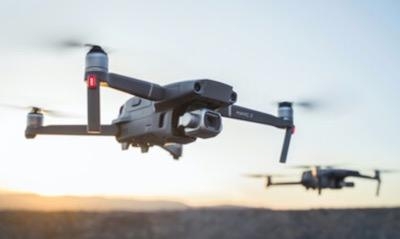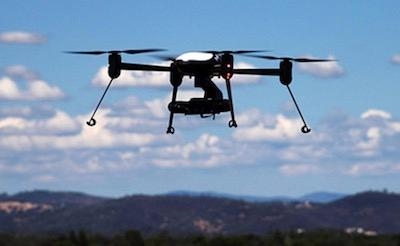Mon, Sep 21, 2020
The UAS-CTI Program Was Launched in April 2020
The FAA's 2018 Reauthorization Act required the FAA to establish a collegiate training initiative program relating to UAS.

The Unmanned Aircraft Systems Collegiate Training Initiative (UAS-CTI) Program was launched in April 2020 and addresses the Section 631 requirement of the FAA 2018 Reauthorization Act. Any public two-year institutions of higher education that participate in the UAS-CTI program will also be designated as members of the Consortium for Small Unmanned Aircraft System Technology Training.
As such, the FAA has announced that 15 more schools have been selected to participate in the UAS Collegiate Training Initiative (UAS-CTI).
The new schools are:
- Austin Community College, Austin, Texas
- Atlantic Cape Community College, Mays Landing, New Jersey
- Big Bend Community College, Moses Lake, Washington
- Blue Ridge Community and Technical College, Martinsburg, West Virginia
- Carroll Community College, Westminster, Maryland
- Clark State Community College, Springfield, Ohio
- Elizabeth City State University, Elizabeth City, North Carolina
- Florida State University, Tallahassee, Florida
- Fullerton College, Fullerton California
- Kansas State Polytechnic, Salina, Kansas
- Liberty University, Lynchburg, Virginia
- Middle Tennessee State University, Murfreesboro, Tennessee
- Mitchell Technical College, Mitchell, South Dakota
- Southern West Virginia Community and Technical College, Mount Gay, West Virginia
-
Yavapai College, Prescott, Arizona

The FAA’s CTI program allows educational institutions to collaborate with the FAA to help students pursue their aviation career goals. The UAS-CTI program recognizes institutions that prepare students for careers involving UAS, commonly referred to as drones.
The new schools join 26 schools that have already been selected to participate in the program.
These previously selected schools are listed below:
- Blue Mountain Community College, Pendleton, Oregon
- Central Oregon Community College, Bend, Oregon
- Dakota College, Bottineau, North Dakota
- Embry Riddle Aeronautical University, Daytona Beach, FL, Prescott, AZ, and Worldwide Campus
- Green River College, Auburn, Washington
- Gulf Coast Community College, Panama City, Florida
- Hazard Community and Technical College, Hazard, Kentucky
- Hinds Community College, Raymond, Mississippi
- Idaho State University, Pocatello, Idaho
- Indiana State University, Terra Haute, Indiana
- Mira Costa College, Carlsbad, California
- Mountain Empire Community College, Big Stone Gap, Virginia
- Mountwest Community and Technical College, Huntington, West Virginia
- Niagara Community College, Sanborn, New York
- North Carolina State University, Raleigh, North Carolina
- Northeastern Technical College, Cheraw, South Carolina
- Northland Community and Technical College, Thief River Falls, Minnesota
- Northwestern Michigan College, Traverse, Michigan
- Oklahoma City Community College, Oklahoma City, Oklahoma
- Palomar College District, San Marcos, California
- Santa Rosa Junior College, Santa Rosa, California
- Southwestern College, Chula Vista, California
- Tallahassee Community College, Tallahassee, Florida
- University of Maine at Augusta, Augusta, Maine
- University of North Dakota, Grand Forks, North Dakota
- WSU Tech, Wichita, Kansas

The FAA launched the UAS-CTI program in April 2020. Participating institutions will engage with the FAA, each other, general industry, local governments, law enforcement, and regional economic development entities to address labor force needs. UAS-CTI school graduates will have the knowledge and skills needed to pursue a successful career in a UAS-related field.
Post-secondary institutions with UAS curriculums seeking recognition as UAS-CTI partners may still apply for this distinction. Program guidelines are posted on our website.
The FAA Reauthorization Act of 2018 (Public Law 115-254) required the FAA to establish a collegiate training initiative program relating to unmanned aircraft and to establish a process to designate consortia of public, two-year institutions of higher education as Community and Technical College Centers of Excellence in Small Unmanned Aircraft System Technology Training.
More News
Light Gun A handheld directional light signaling device which emits a brilliant narrow beam of white, green, or red light as selected by the tower controller. The color and type of>[...]
"The journey to this achievement started nearly a decade ago when a freshly commissioned Gentry, driven by a fascination with new technologies and a desire to contribute significan>[...]
Aero Linx: JAARS, Inc. For decades now, we’ve landed planes on narrow rivers and towering mountains. We’ve outfitted boats and vehicles to reach villages that rarely se>[...]
"Our driven and innovative team of military and civilian Airmen delivers combat power daily, ensuring our nation is ready today and tomorrow." Source: General Duke Richardson, AFMC>[...]
Aircraft Conflict Predicted conflict, within EDST of two aircraft, or between aircraft and airspace. A Red alert is used for conflicts when the predicted minimum separation is 5 na>[...]
 ANN's Daily Aero-Term (04.20.24): Light Gun
ANN's Daily Aero-Term (04.20.24): Light Gun Aero-News: Quote of the Day (04.20.24)
Aero-News: Quote of the Day (04.20.24) ANN's Daily Aero-Linx (04.21.24)
ANN's Daily Aero-Linx (04.21.24) Aero-News: Quote of the Day (04.21.24)
Aero-News: Quote of the Day (04.21.24) ANN's Daily Aero-Term (04.21.24): Aircraft Conflict
ANN's Daily Aero-Term (04.21.24): Aircraft Conflict





